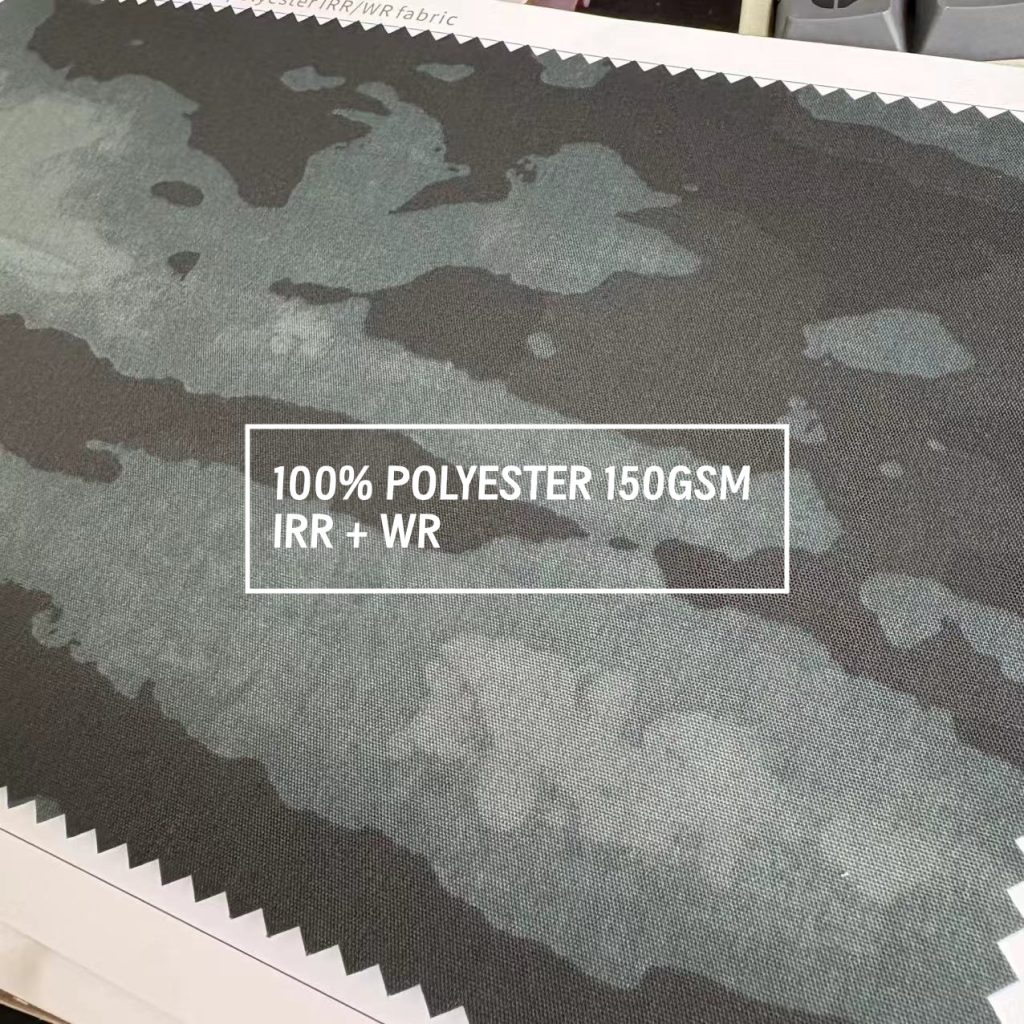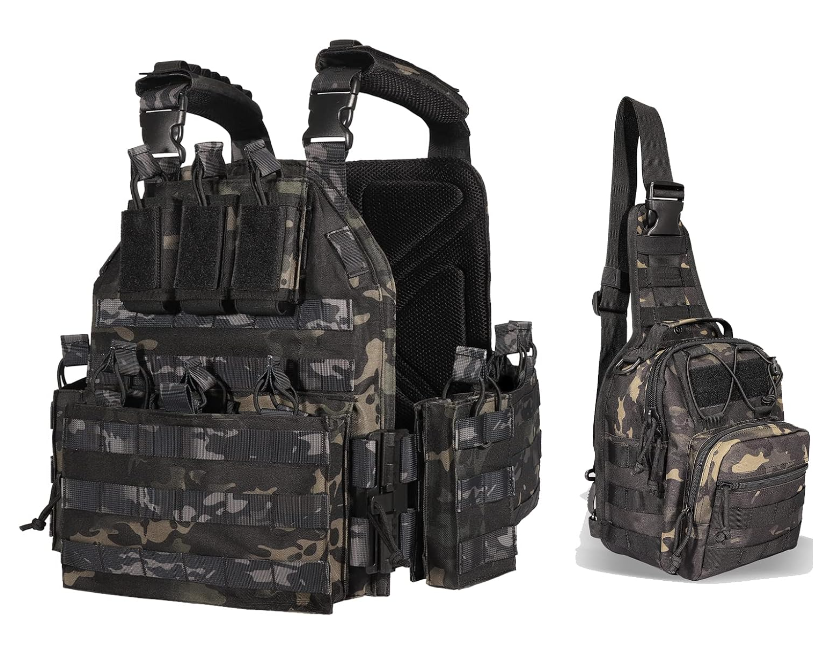Infrared detection technology has advanced, making traditional camouflage insufficient for modern combat. IRR fabric, or Infrared Reflective fabric, offers a specialized solution, helping military and tactical personnel remain undetected against night vision devices. In this article, I’ll explain what IRR fabric is, how it works, and its essential applications.
IRR fabric (Infrared Reflective fabric) is a type of material designed to reduce visibility under night vision and infrared detection. By incorporating multi-layered infrared signatures and specific reflective wavelengths, IRR fabric helps wearers blend seamlessly with their environment, offering crucial concealment against thermal imaging and night vision surveillance.
What is IRR Fabric?
IRR fabric, short for Infrared Reflective fabric, is a highly specialized textile designed to protect the wearer from detection under infrared and night vision equipment. The unique properties of IRR fabric stem from its construction, which involves precise control over the fabric’s infrared reflectivity. Each part of the camouflage pattern in IRR fabric reflects infrared wavelengths that match specific elements of the environment, like foliage, snow, or desert sand, depending on the application.
In addition to the military sector, the demand for IRR fabric has been expanding into security services, law enforcement, and outdoor sports. Industries that require concealment or protection from infrared tracking can benefit from the technology embedded in IRR fabric. By adopting IRR material, brands can enhance their product offerings to meet the increasing need for tactical and high-performance concealment solutions.
How Does IRR Fabric Work?
The technology behind IRR fabric hinges on visual disruption, using multi-layered infrared signatures for each color in its print pattern. Each layer is precisely calibrated to reflect specific wavelengths that mimic natural surroundings in the infrared spectrum. This controlled reflection disrupts the wearer’s silhouette, making it harder for infrared devices to detect them against diverse backgrounds like snow, rocks, forests, and urban settings.
For example, when a soldier wearing IRR fabric moves through a forest at night, the fabric reflects infrared light similar to that of tree trunks or leaves, rather than human body heat. This capability is achieved by adjusting the infrared reflectivity for each color in the camouflage pattern, creating a multi-layered signature. Unlike traditional materials that reflect infrared light unevenly, IRR fabrics provide consistent protection across the entire garment, maintaining concealment under infrared surveillance.
Primary Uses of IRR Fabric
- Military Uniforms: IRR fabric is foundational in today’s military uniforms, allowing soldiers to maintain concealment from infrared detection devices. Unlike traditional camouflage that may fail under night vision, IRR-treated fabric sustains its pattern under these advanced optics. Military forces worldwide have incorporated IRR fabric to ensure personnel remain undetected during night missions, safeguarding them from infrared detection equipment.
- Tactical Gear: IRR fabric is used to make various tactical gear, including vests, belts, and backpacks, in addition to uniforms. The fabric is durable and reflects infrared light, making it perfect for accessories needed in stealth operations. Gear made from IRR fabric is lightweight but strong, and the fabric’s versatility means these items will retain their protective features even after prolonged use in extreme conditions.
- Covert Operations: IRR fabric is invaluable for covert missions where night vision and infrared technology are widely used. It allows personnel to operate undetected, giving them a tactical advantage in high-risk environments. Covert teams rely on IRR-compliant materials to approach and exit areas with a lower risk of detection, contributing to the safety and success of such missions.
- Outdoor and Survival Gear: IRR fabrics are also being used in outdoor gear for civilian applications. Hunters, wildlife photographers, and other outdoor enthusiasts are using IRR-equipped apparel to avoid disturbing wildlife. In addition, certain outdoor brands have introduced IRR fabrics into camping gear, backpacks, and shelter materials to enhance the experience of blending with the natural environment.
Why is IR Reflective Fabric Important in Modern Warfare?
The introduction of IRR fabric is a major advancement in combat camouflage. As night vision and infrared cameras become more accessible, traditional camouflage becomes less effective. IRR-compliant fabrics retain their camouflage patterns in both daylight and nighttime conditions, unlike non-compliant materials that often appear as a solid color under night vision. By addressing these limitations, IRR fabric has become essential in military operations, ensuring personnel remain concealed across various lighting conditions.
Unique Selling Points of Our IRR Fabric

- Guaranteed IR Standards: Each meter of our fabric meets stringent IRR compliance standards, so you can be confident it will perform as expected for tactical applications.
- Resilient in Extreme Conditions: Our IRR fabric is engineered to perform under harsh outdoor conditions, including rain, wetlands, extreme temperatures, and high humidity. The infrared protection remains stable, providing uninterrupted concealment.
- Comprehensive Near-to-Far Infrared Protection: Our fabric effectively shields against infrared detection across near, mid, and far-infrared wavelengths, giving you comprehensive protection suited for a variety of environments and use cases.
What is Infrared Fabric, and How Does It Differ from IRR Fabric?
Infrared fabrics in general are materials that can recycle infrared and visible light as energy, often used in health applications to enhance blood flow and oxygen levels. While infrared fabrics are beneficial for wellness, IRR fabric is designed specifically for military and tactical applications, ensuring concealment against thermal and night vision imaging.
What Does IR Reflective Mean in Tactical Gear?
IR reflective materials are fabrics that are designed to reflect IR radiation instead of absorbing it. This means that thermal imaging devices can’t see the fabric. This is important for military and tactical gear. If you are wearing gear that is IR reflective, you are invisible to thermal imaging devices, an invaluable asset in high-risk situations.
In today’s tactical gear, IR reflective properties are not just a benefit; they are a requirement. Many tactical vests, backpacks, and helmets incorporate IRR fabric to help users stay hidden. The IRR fabric is durable, ensuring that its IR reflective properties don’t fade away quickly, allowing the gear to maintain effectiveness over time.
Summary
IRR fabric is a must-have for modern tactical and military gear as infrared detection technology continues to advance. Our IRR fabric offers exceptional stability and IR protection, helping wearers remain hidden even in extreme environments. By choosing our IRR fabric, you can create products that meet the highest standards of IR concealment, providing both tactical advantages and long-term durability in the field. Whether for military operations, covert missions, or outdoor activities, IRR fabric represents a significant leap forward in protective textile technology.

